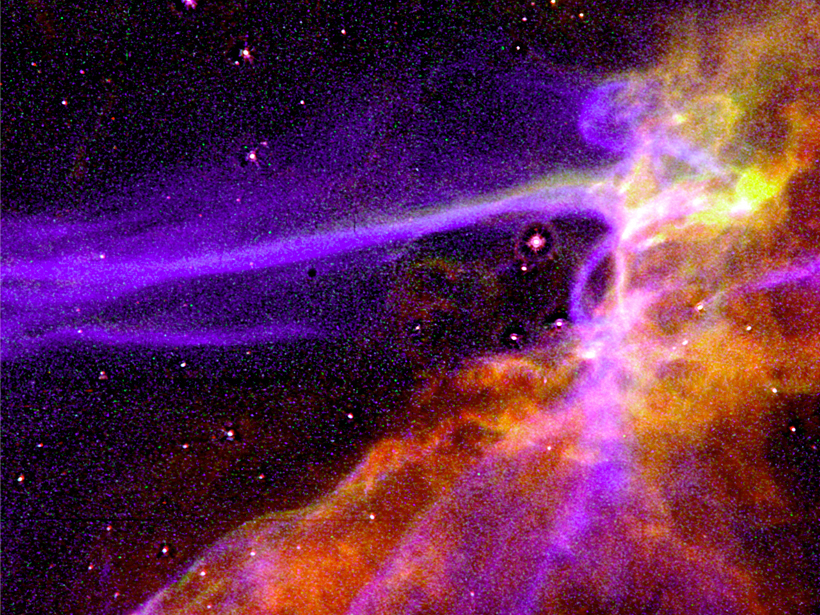Source: Geophysical Research Letters
Collisionless shock waves are observed throughout the universe, including in the heliosphere and the expanding debris clouds of supernovae. These types of shocks are unique because of the low density of the plasma in which they occur.
Scientists have numerically modeled shock formation in the past but have not confirmed these predictions through in situ measurements or through experiments. Niemann et al. have now made measurements of collisionless shock waves in the lab.
In a normal shock wave, as the gas compresses, the particles “collide”—that is, they get so close that their electric fields cause them to change direction, and they pile up like a traffic jam. However, in a collisionless shock wave, the gas density is too low for the particles to interact in this way; instead, they are pushed around by turbulent waves in the plasma that act on much smaller scales.
Creating collisionless shock waves in a controlled laboratory setting allows scientists to make measurements at the microscale that would otherwise be impossible in space. Previous laboratory experiments used pistons to generate shock waves in plasma, but these were limited to perpendicular motion and did not propagate away from the pistons. Later experiments created shocks in laser or photoionized plasma but encountered problems with magnetizing or ionizing the background.
The authors created an experiment at the Large Plasma Device at the University of California in Los Angeles that used a high-power laser to blow up a piece of plastic, creating a cloud of debris exploding into a stationary magnetized plasma. Collisionless interactions transfer momentum from the debris cloud to the ambient ions, creating a shock that travels away from the piston. The team plotted the shock waves and compared them to numerical simulations.
The measurements collected by the team validate the models that predicted that collisionless interactions accelerate the ambient ions to the debris velocity. The data also indicated that microinstabilities play a minor role in shock dissipation. These results will be useful in future studies of the microphysics of magnetized shocks. (Geophysical Research Letters, doi:10.1002/2014GL061820, 2014)
—Catherine Minnehan, Freelance Writer
Citation: Minnehan, C. (2015), Magnetized collisionless shock waves measured in the lab, Eos, 96, doi:10.1029/2015EO036441. Published on 6 October 2015.
Text © 2015. The authors. CC BY-NC 3.0
Except where otherwise noted, images are subject to copyright. Any reuse without express permission from the copyright owner is prohibited.

